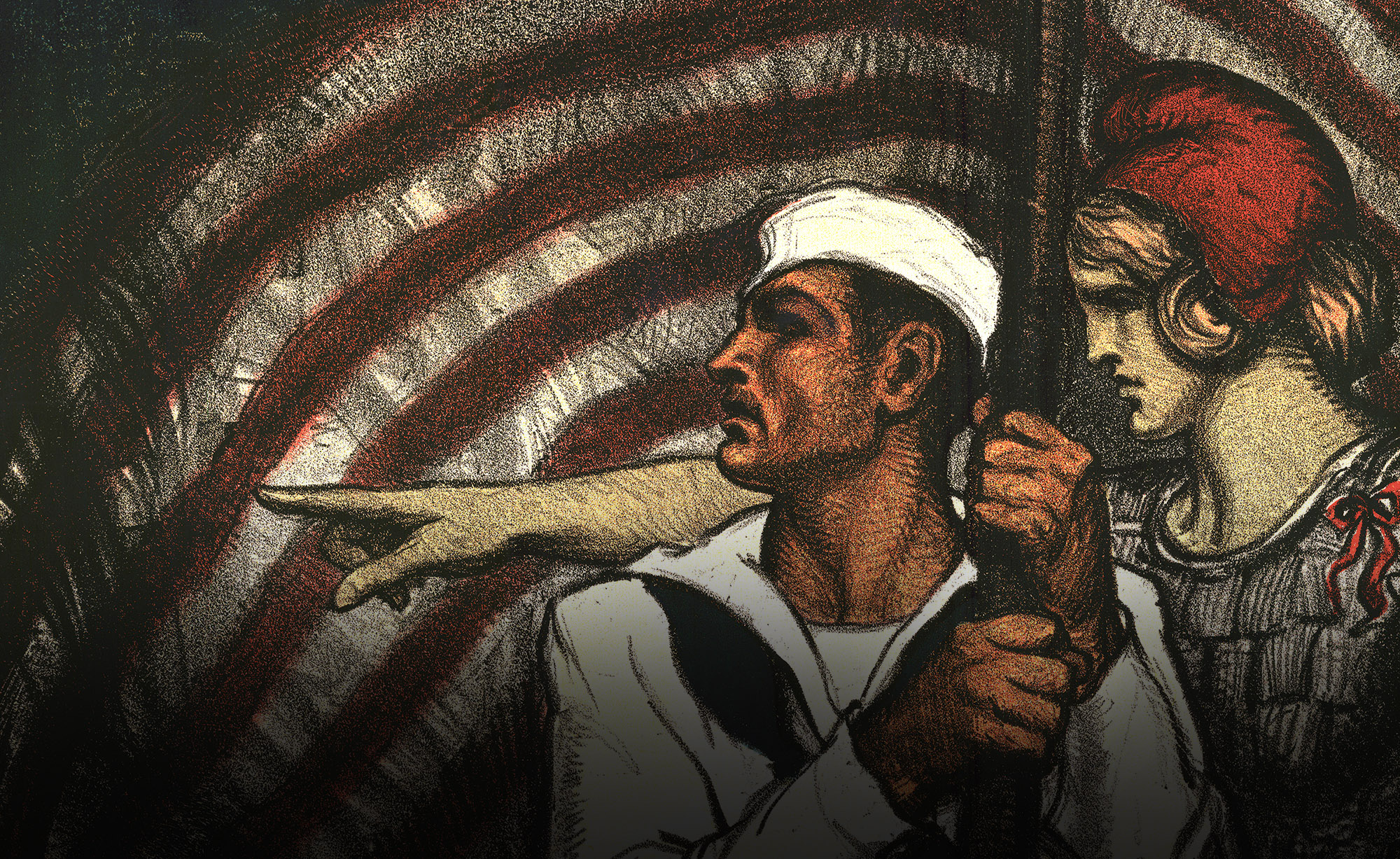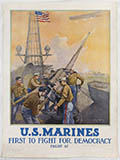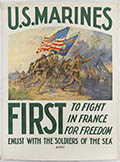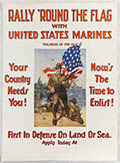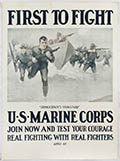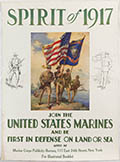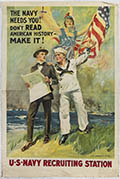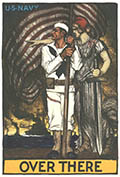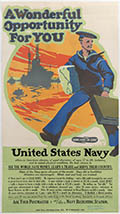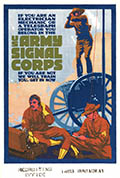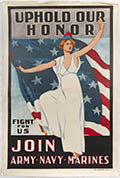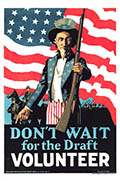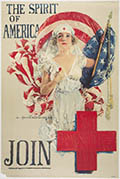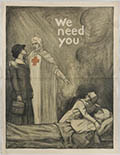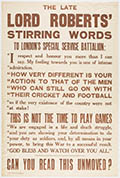War is dependent on human bodies, but convincing people to voluntarily risk their freedom and safety is extraordinarily difficult. Trench warfare and technological advances in machinery and chemical weapons made WWI remarkably traumatic. With most Americans favoring the policy of neutrality, sophisticated justifications for war were needed to recruit soldiers, nurses, and military personnel, especially after Congress declared war on April 6, 1917. In response, WWI propaganda posters generally relied on patriotic themes, emotional appeals to pride and shame, and sanitized representations of conflict in which specific enemies and blood are largely absent. Indeed, what is missing in the posters is oftentimes as significant as the material shown. For instance, despite making significant sacrifices, the service of African Americans is entirely omitted in the posters of this collection, a clear sign of prevailing racist sentiments from the period. All told, the United States contributed over 4 million men and women to WWI, with 110,000 Americans dying as a result.
